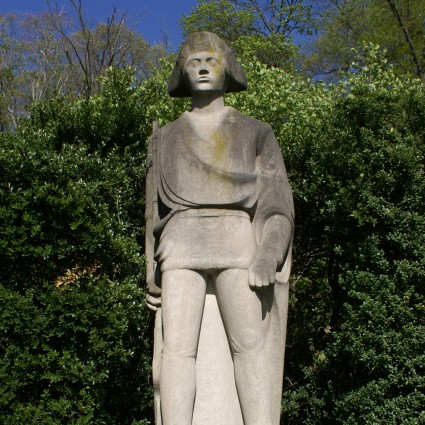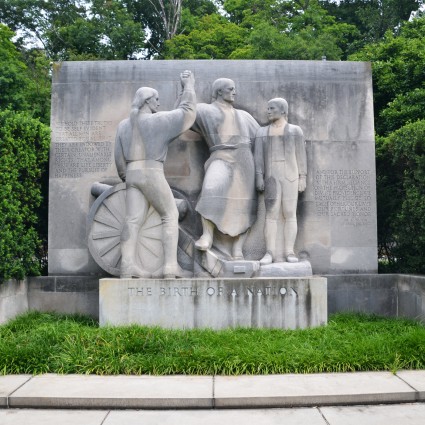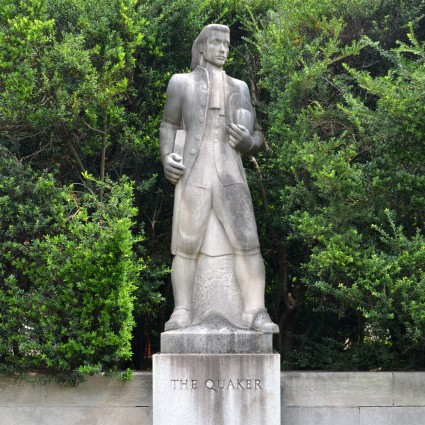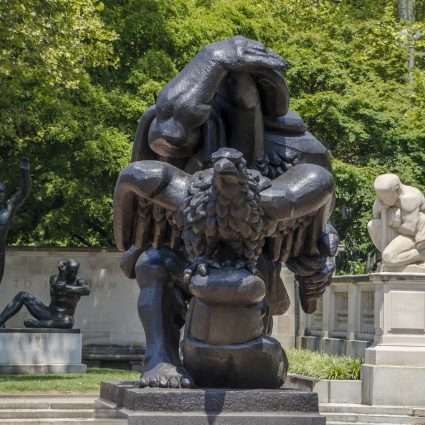At A Glance
Part of the Museum Without Walls: AUDIO program
Commissioned for the Ellen Phillips Samuel Memorial
One of two figures by Erwin Frey in the South Terrace of the Ellen Phillips Samuel Memorial
The subject represents the United State’s political intelligence, respectably dressed and of a serious, resolute demeanor
Political intelligence and military might, twin necessities of the new republic, are the subject of Erwin Frey’s two figures: The Statesman and The Revolutionary Soldier. Frey, a professor at Ohio State University who had worked as an assistant to August Saint-Gaudens and Herbert Adams, was selected by the Fairmount Park Art Association (now the Association for Public Art) for both of these works. Frey’s figure of the statesman is respectably dressed and of a serious, resolute demeanor matching the soldier’s.
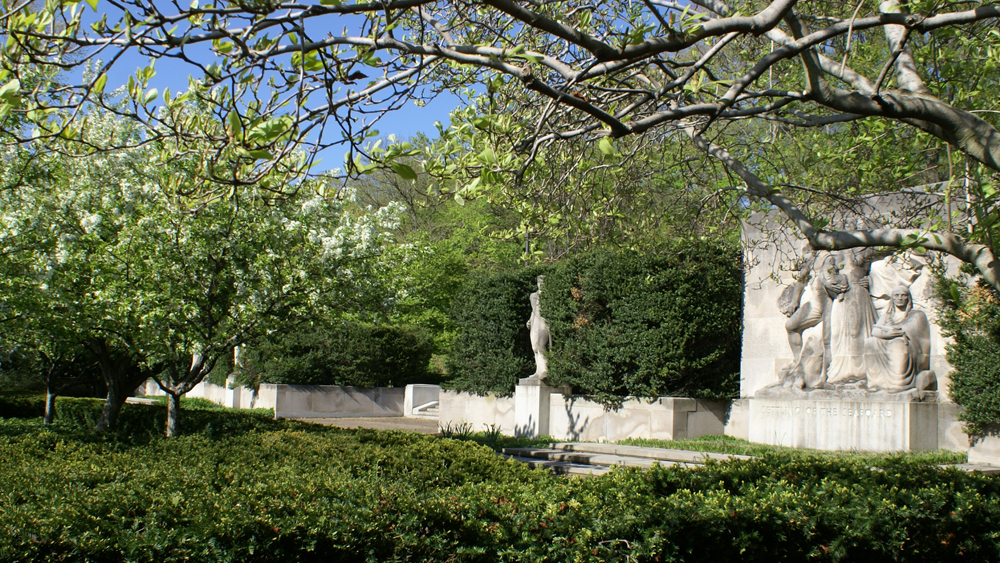
The South Terrace of the Ellen Phillips Samuel Memorial
After the second Sculpture International in 1940, the Samuel Memorial committee selected four sculptors to express the governing themes of the new South Terrace – the settlement of the eastern coast and the emergence of the United States as an independent, democratic nation. The two principal groups were carved as reliefs, the other four sculptures as free-standing figures.
Sculptures in the South Terrace:
- Settling of the Seaboard, Wheeler Williams
- The Birth of a Nation, Henry Kreis
- The Puritan, Harry Rosin
- The Quaker, Harry Rosin
- The Revolutionary Soldier, Erwin Frey
- The Statesman, Erwin Frey
Adapted from Public Art in Philadelphia by Penny Balkin Bach (Temple University Press, Philadelphia, 1992).
Voices heard in the Museum Without Walls: AUDIO program: Penny Balkin Bach is the former Executive Director & Chief Curator of the Association for Public Art (formerly the Fairmount Park Art Association) and the author of many books and articles about Philadelphia’s public art. Kathleen A. Foster is Robert L. McNeil, Jr., Senior Curator of American Art and Director of the Center for American Art at the Philadelphia Museum of Art. Michael W. Zuckerman is Professor of History at the University of Pennsylvania and specializes in American Studies. He served on the Consultant Board for PBS “History Detectives” and is the Museum Without Walls Consulting Historian. | Segment Producer: Amanda Aronczyk and Ave Carrillo
Museum Without Walls: AUDIO is the Association for Public Art’s award-winning audio program for Philadelphia’s outdoor sculpture. Available for free by phone, mobile app, or online, the program features more than 150 voices from all walks of life – artists, educators, civic leaders, historians, and those with personal connections to the artworks.
RESOURCES:
Voices heard in the program:
Penny Balkin Bach is the former Executive Director & Chief Curator of the Association for Public Art (formerly the Fairmount Park Art Association) and the author of many books and articles about Philadelphia’s public art.
Kathleen A. Foster is Robert L. McNeil, Jr., Senior Curator of American Art and Director of the Center for American Art at the Philadelphia Museum of Art.
Michael W. Zuckerman is Professor of History at the University of Pennsylvania and specializes in American Studies. He served on the Consultant Board for PBS “History Detectives” and is the Museum Without Walls Consulting Historian.
Segment Producer: Amanda Aronczyk and Ave Carrillo
A program of the Association for Public Art (formerly the Fairmount Park Art Association), Museum Without Walls: AUDIO is an innovative and accessible outdoor sculpture audio program for Philadelphia’s preeminent collection of public art.
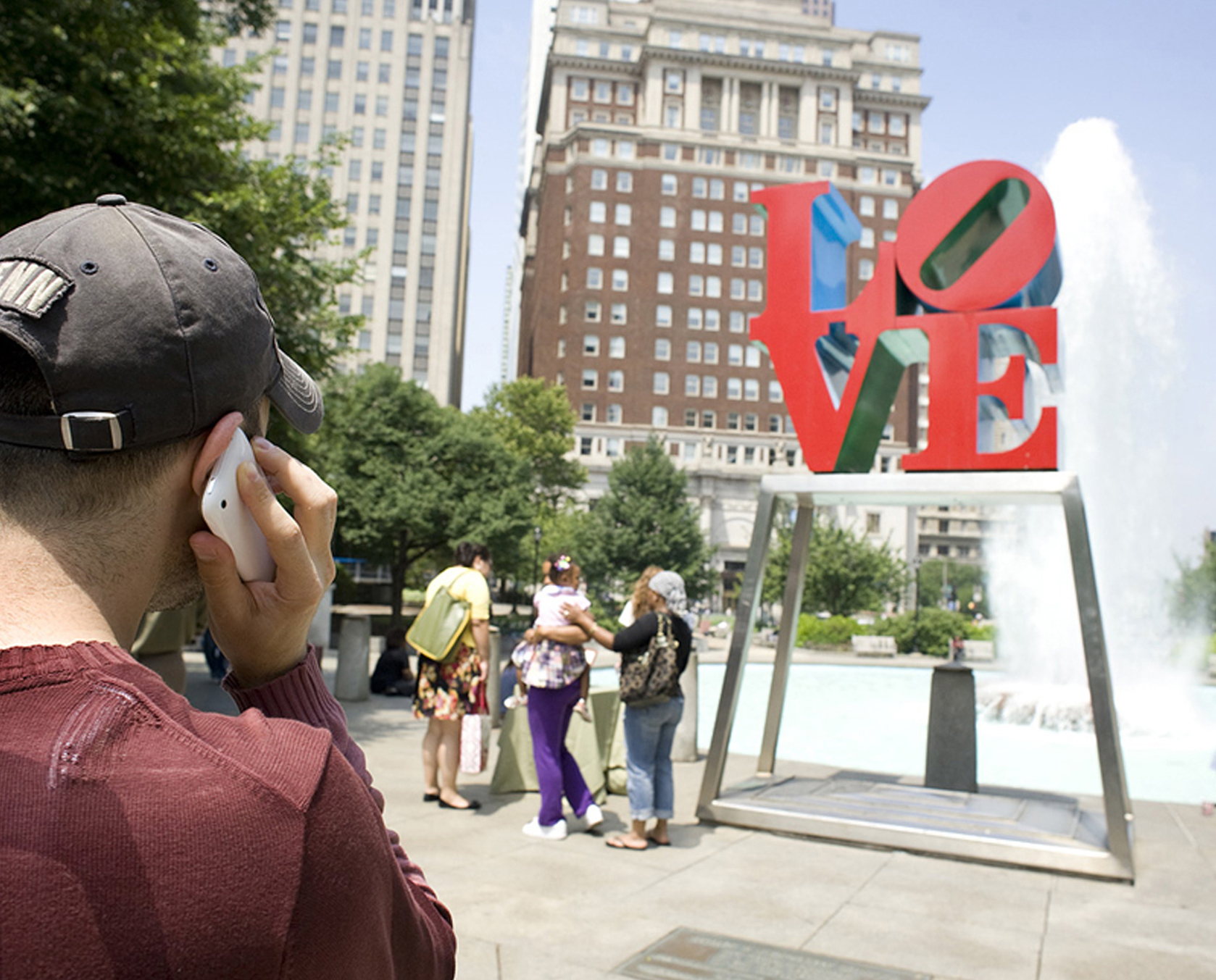
A “multi-platform” interactive audio experience – available for free by cell phone, mobile app, or on our website – Museum Without Walls: AUDIO offers the unique histories that are not typically expressed on outdoor permanent signage.
Unlike audio tours that have a single authoritative guide or narrator, each speaker featured in Museum Without Walls: AUDIO is an “authentic voice” – someone who is connected to the sculpture by knowledge, experience, or affiliation.
Over 150 unique voices are featured, including artists, educators, scientists, writers, curators, civic leaders, and historians.
